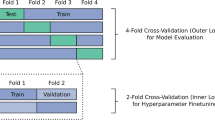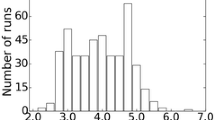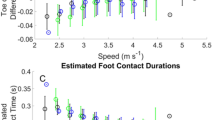Abstract
Measurement of ground reaction force (GRF) in running provides a direct indication of the loads to which the body is subjected at each foot-ground contact, and can provide an objective explanation for performance outcomes. Traditionally, the collection of three orthogonal component GRF data in running requires an athlete to complete a series of return loops along a laboratory based runway, within which a force platform is embedded, in order to collect data from a discrete footfall. The major disadvantages associated with this GRF data collection methodology include the inability to assess multiple consecutive foot contacts and the fact that measurements are typically confined to the laboratory. The objective of this research was to investigate the potential for wearable instrumentation to be employed, in conjunction with artificial neural network (ANN) and multiple linear regression (MLR) models, for the estimation of GRF in middle distance running. A modular wearable data acquisition system was developed to acquire in-shoe force (ISF) data. Matched data sets from wearable instrumentation (source data) and force plate (target data) records were collected from elite middle-distance runners under controlled laboratory conditions for the purposes of ANN and MLR model development (MD) and model validation (MV).
In terms of statistical measures of prediction accuracy the MLR model was found to provide a superior level of accuracy for the prediction of the vertical and medio-lateral components of GRF and alternatively, the ANN model provided the most accurate predictions of the anterior-posterior component of GRF. The prediction accuracy of each component of GRF was found to be governed by the inherent signal variability, in which case the vertical and anterior-posterior components were more reliable and subsequently predicted significantly more accurately than the medio-lateral component.
The emerging capability for obtaining continuous GRF records from wearable instrumentation has the potential to permit unprecedented quantification of training stress and competition demands in running.
Similar content being viewed by others
References
Chau, T. (2001) A review of analytical techniques for gait data. Part 2: neural network and wavelet methods.Gait & Posture,13, 102–120.
Chesnin, K.J., Selby-Silverstein, L. & Besser, M.P. (2000) Comparison of an in-shoe pressure measurement device to a force plate: concurrent validity of centre of pressure measurements.Gait & Posture,12, 128–133.
Draper, N.R. & Smith, H. (1998)Applied regression analysis. New York, Wiley.
Gross, T.S. & Bunch, R.P. (1989) Discrete normal plantar stress variations with running speed.Journal of Biomechanics,22, 699–703.
Hennig, E.M. & Milani, T.L. (1995) In-shoe pressure distribution for running in various types of footwear.Journal of Applied Biomechanics,11, 299–310.
Leyerer, R., Schaff, P. & Wetter, O. (1997)Device for prevention of ulcers in the feet of diabetes patients. USA, Paromed Medizintechnik GmbH.
Orlin, M.N. & McPoil, T.G. (2000) Plantar pressure assessment.Physical Therapy,80, 399–409.
Perttunen, J., Kyrolainen, H., Komi, P.V. & Heinonen, A. (2000) Biomechanical loading in the triple jump.Journal of Sports Sciences,18, 363–370.
Putnam, C.A. & Kozey, J.W. (1989) Substantive issues in running. In Vaughan, C.L. (Ed.)Biomechanics of Sport. Boca Raton, Florida, CRC Press, Inc.
Razian, M.A. & Pepper, M.G. (2003) Design, development, and characteristics of an in-shoe triaxial pressure measurement transducer utilizing a single element of piezoelectric copolymer film.IEEE Transactions on Neural Systems & Rehabilitation Engineering,11, 288–293.
Savelberg, H.H.C.M. & de Lange, A.L.H. (1999) Assessment of the horizontal, fore-aft component of the ground reaction force from insole pressure patterns by using artificial neural networks.Clinical Biomechanics,14, 585–592.
Tillman, M., Fiolkowski, P., Bauer, J.A. & Reisinger, K.D. (2002) In-shoe plantar pressure measurements during running on different surfaces: changes in temporal and kinetic parameters.Sports Engineering,5, 121–128.
Walsh, M. & Kanal, Y. (1997) Measurement of plantar pressure during high impact-short contact time sports activities.Proceedings of the 15th International Symposium on Biomechanics in Sports. Denton, Texas.
Weyand, P.G., Sternlight, D.B., Bellizzi, M.J. & Wright, S. (2000) Faster top running speeds are achieved with greater ground forces not more rapid leg movements.Journal of Applied Physiology,89, 1991–1999.
Author information
Authors and Affiliations
Corresponding author
Rights and permissions
About this article
Cite this article
Billing, D.C., Nagarajah, C.R., Hayes, J.P. et al. Predicting ground reaction forces in running using micro-sensors and neural networks. Sports Eng 9, 15–27 (2006). https://doi.org/10.1007/BF02844259
Issue Date:
DOI: https://doi.org/10.1007/BF02844259




